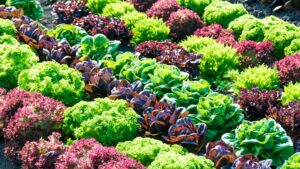In a global economy where everything is accessible at the click of a mouse, it’s easy to take for granted the basic essentials of life: food, clothing, shelter, clean water … But with a world population that’s expected to reach 9.8 billion by 2050, we will likely need to double our crop production just to meet the needs of future generations.
Meeting these needs will likely require innovation in all areas of the seed industry, whether it is new germplasm, traits, breeding technologies, seed coatings, seed sorting, planting, harvesting or consumer-focused innovations. Only by working together and respecting the rights of others can we ensure the continued development of those innovations that will meet the needs of future generations.

New innovations that provide benefits throughout the seed industry stream of commerce are continually being developed.
One area of innovation is seed coatings. Preemergent seed technologies, such as organic seed treatments, provide early season protection against pests like Pythium in spinach production. Additionally, weed priming and enhancement technologies improve vegetable seed yield and quality.
On the grower side, companies have delivered innovation through: nematode resistant carrots, mildew resistant lettuce, mildew resistant spinach and aphid resistant lettuce.
Companies have also considered harvestability in their list of desired characteristics. Innovation has been delivered with mechanically harvestable broccoli, melons and parthenocarpic cucumbers (pickles) — all a cost-savings when it comes to labor.
When we shift to the end user, the consumer, innovation is just taking hold with:
• Snack-sized miniconical peppers with almost no seeds, which are fun and sweet tasting for kids.
• Herb and arugula varieties that offer improved shelf-life capacity.
• One-cut lettuce, featuring brilliant colors and diverse leaf shapes.
• Lettuce with longer shelf life and a better consumer experience.
• Tear-less onions provide a better consumer experience for preparing cut onions.
However, these cutting-edge innovations come at a cost. It is only through a commitment to research and development that the industry benefits from these innovations. Seed companies constantly invest in the development of new seed technologies and innovations.
A great example of that investment is shown in leafy greens. In 1995, an estimated $5 million was invested in new lettuce innovations, increasing to $16.7 million in 2005 and $24.5 million in 2015.
Furthermore, for many crops it takes seven to 10 years to develop and commercialize a new variety, costing upward of a $1 million per year. While this investment in innovation might seem daunting, it is necessary for our future crop production. Take note: it’s working.
During the past 30 years, thanks to continued innovations throughout the seed industry, soil erosion, greenhouse gas emissions, water and energy use have all gone down, while crop yields have steadily gone up.
From new germplasm to harvesters, every area of the seed industry contributes to the investment in new innovations that are needed for future generations. For sustainability, we all need to be profitable to make these investments in new innovations.
Respect Yields Results
When members of the industry respect the rights of others, they are investing in both their company and the seed industry.
For seed companies, this can mean respecting the breeding methods, traits and germplasm of your competitors. For dealers, this can be selling professionally produced seed from a reliable source, which maintains a standard and reputation that growers know they can count on. For growers, buying professionally produced seed and seed coatings maximizes resources and provides the greatest yield, which in turn leads to more profits.
Together, we are seeding the future to ensure that the needs of the next generations are met through our innovations!











